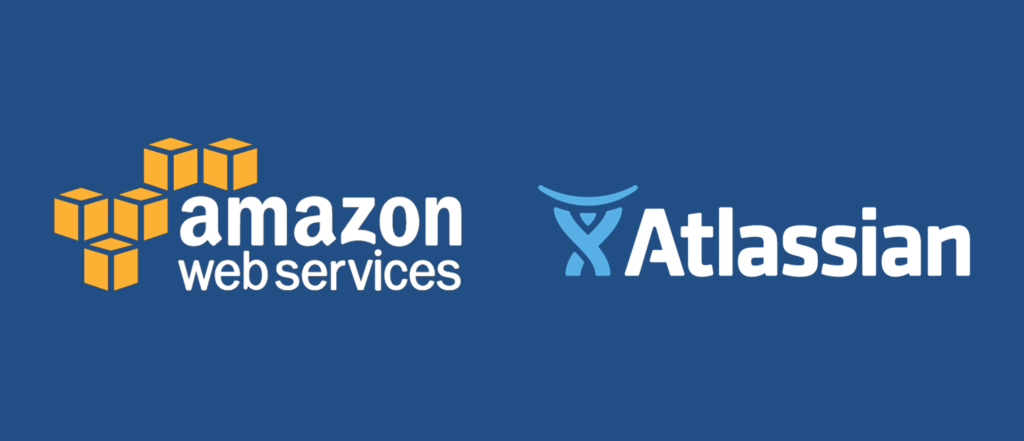
We’ve highlighted below the five benefits that come with hosting your Atlassian applications (including JIRA, Confluence, Bitbucket, and more) on AWS:
1. AWS Design Best Practices
Service availability is important especially when hosting Atlassian applications that many users are dependent on for their day-to-day activities such as JIRA, Bitbucket or Confluence. Service downtime can be caused by many factors like a software upgrade, OS upgrade, database corruption, software defects or human administrative error. That implies that the underlying infrastructure is just a component to consider, but not the sole function governing service availability numbers.
To reduce the overall risk of application downtime, here are some very specific AWS Design best practices that should be followed when hosting applications on AWS:
- Build redundancy at each layer and avoid single point of failures, including:
- Storage – Take regular backups to durable storage like Amazon Simple Storage Service (Amazon S3).
- Networking – utilize Amazon Route53, Amazon Elastic Load Balancer (Amazon ELB) to ensure internet access uptime.
- Availability Zone (AZ) Level – Utilize multiple AZs within a region where possible for certain key components such as centralized databases.
- Externalize data/state to a common store and keep a replica:
- For Amazon Relational Database Service (Amazon RDS) (or database on Amazon Elastic Compute Cloud (Amazon EC2)), have multi-AZ deployments and possibly also have same-region/cross-region Read Replicas enabled.
- If the application can be refactors, never store session state in the web/app tiers; externalize that to a cache (like Amazon ElastiCache) or persistent database layer (like Amazon DynamoDB).
- Use health checks, monitoring and auto-recovery features:
- Utilize Amazon Route53, Amazon Elastic Load Balancer (Amazon ELB) and Amazon EC2 instance level health/status checks. You could also tie that with Amazon EC2 auto-scaling functionality in case of any particular instance going down and therefore launching a replacement instance. Amazon EC2 now also has auto recovery feature which helps in case of underlying host level failures.
- Enable continuous, detailed Amazon CloudWatch metrics and custom monitoring along-with alerting can tremendously help detect and act on failures in almost real-time. You can also make use of the Amazon CloudWatch Logs feature, in which real-time monitoring of application logs can also be done.
2. Ensure Maximum Security and Compliance by Hosting on AWS
Security is the number one priority for AWS. The underlying infrastructure incorporates industry-leading safeguards, engineered to protect privacy and secure data across AWS data centers.
- Infrastructure Security: AWS’ security features include built-in firewalls, in-transit encryption, and connectivity options enabling dedicated or private connections from any environment.
- Data Encryption: With AWS, you can add an extra layer of security to at-rest data with encryption features like flexible management and cryptographic, hardware-based key storage.
- Inventory and Configuration: AWS provides security assessment services, deployment options, inventory and configuration management capabilities, and template definition tools.
- Monitoring and Logging: Keep an eye on your AWS environment with log aggregation, streamlined compliance reports, alert notifications, and more.
- Identity and Access Control: With AWS, you can manage, define, and enforce user access policies with tools including multi-factor authentication and directory services.
Whether your organization is big or small, you can leverage the power of the AWS cloud to automatically benefit from enterprise-grade security and ensure PCI, SOX, and HIPAA compliance.
3. Don’t Get Stuck Without Support for Market Add-Ons, Integrations, and Plug-Ins
The right hosting platform should be ready to host all of your marketplace add-ons without limitations. Hosting Atlassian applications on AWS can enable support for all integrations and plug-ins (including server only versions) and server-only Atlassian products like Bamboo.
Did you know Atlassian recently announced the end-of-life (EOL) for Bamboo Cloud? Read our blog to find out more!
4. Host Atlassian Applications on AWS to Enable External Authentication and Single Sign-On (SSO) Integration
Atlassian deployments on AWS are able to interface with LDAP, Active Directory, and other systems to facilitate SSO to all your Atlassian applications.
5. Enable Seamless Disaster Recovery (DR) when Hosting Atlassian Applications on AWS
DR is an in-demand feature, but it’s only available on Atlassian Data Center deployments. By hosting Atlassian applications on AWS, you can leverage the power of AWS’ global infrastructure to enable multi-region disaster recovery for mission-critical applications including JIRA, Confluence, and other Atlassian applications.
Looking to host Atlassian on AWS? Elasity is the world’s most secure and flexible cloud hosting platform for Atlassian applications in the world. We have a dedicated team that can provide 24/7 expert support to help manage your Atlassian stack, while you focus on running your business. Contact us to get started today!
Read more:
- Atlassian Announces End-of-Life (EOL) for Bamboo Cloud. Is it Time to Consider a Managed Cloud Hosting Solution?
- 5 HipChat Tips to Help Teams Get More Done
- iTMethods Launches Elasity – The World’s First Fully Managed Cloud Hosting Platform for Atlassian Applications and Add-Ons
- 3 Reasons You Need Atlassian Data Center - February 26, 2019
- Atlassian’s 5-Step Guide to Creating an Incident Communication Plan - November 14, 2018
- 4 Tips to Maximize DevOps Success While Ensuring Regulatory Compliance - September 5, 2018


